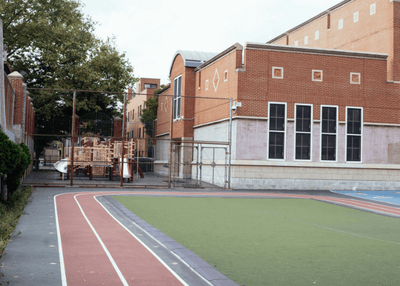Stagnant Water and Lead in School Pipes Are a Health Risk To Children
RSS
Hydroviv Science Team
All across the country, students, teachers, staff, and administrators are preparing to return to school, getting ready for the start of a new school year. Many school buildings were not used over the summer, meaning that the water in the buildings' pipes have been sitting stagnant for nearly two months. The CDC has developed recommendations for steps to take when reopening buildings after an extended shutdown or low-use period. This is also an issue that Purdue University has been researching. Here is how lead in water could impact schools in your area.
There is NO Safe Level of Lead For Children
Exposure to any amount of lead can cause serious health impacts, particularly in young children. According to the American Academy of Pediatrics (AAP), exposure to low levels of lead can cause permanent cognitive, academic, and behavioral difficulties in children. There is a serious disconnect between the legal limit and the levels deemed appropriate by major health organizations. Lead is a neurotoxin, and children should not consume any amount, especially at school.
Why Does Stagnant Water Increase Lead Levels?
Lead accumulates in water when it leaches from lead-containing pipes, plumbing, and fixtures. The periods of inertia in plumbing during weekends and summer vacation allow water to sit stagnant for extended periods of time. The longer water sits stagnant in pipes in the distribution system, the more lead can accumulate. This is the major difference between lead accumulation in homes vs. schools and childcare facilities. Some school districts make sure to flush pipes in August before the start of the school year. Unfortunately, some schools don’t have the funds to ensure proper flushing. In an average household, water flows on a daily basis and doesn’t sit stagnant for more than 12 hours at a time. Schools retain stagnant water in the pipes over weekends, and more so during long weekends, holiday breaks, and especially during summer breaks.
Why Are Schools and Childcare Facilities Most Susceptible To Lead Contamination?
Schools in the United States are old, and many were built with lead-containing pipes, plumbing, and fixtures. According to data from the Department of Education, the average age of a public school in the United States is 44 years old. Additionally, children are particularly vulnerable to the negative effects of lead exposure. The current federal Action Level for lead in drinking water is 15 parts per billion. Unfortunately, schools are not required to follow this already weak standard for municipal water. The EPA suggests schools maintain lead levels under 20 parts per billion. This is shocking, considering that public health organizations agree that there is no safe level of lead for children.
What is Legionnaires' Disease and Why Is It Being Detected In Schools' Drinking Water?
The New York Times recently reported that several school districts around the country have detected Legionella, the bacteria that causes Legionnaires' Disease, in schools' drinking water. Legionnaires Disease is a type of pneumonia that can form in stagnant water. It's spread through the inhalation of small water droplets that contain the disease - from sources including showers, toilets, and water fountains. Prolonged school closures including summer and holiday breaks, and even long weekends provide an ideal environment for Legionella to manifest in drinking water.
Why Many Schools Don’t Test for Lead:
There is no Federal law that requires schools to test for lead. Some states have created laws that mandate schools to test; however, a 2018 report by the Government Accountability Office (GAO), found that only 15 states actually require schools to test for lead. As of 2018, 43% of public schools tested for lead in drinking water.
Our Take:
There’s no guarantee that the water coming out of school fountains is free of lead. As a parent or member of the community, there are a few things you can do to ensure that children are not being exposed to lead. Once schools open their doors again, you can contact your superintendent’s office to make them aware of this issue. A common mitigation technique is to allow water lines to run for an extended period of time. Parents can also speak with principals to make sure that custodians and maintenance staff flush water lines before kids go back to school. When in doubt, have your children fill up a water bottle from home with filtered water and bring to school!
Other Articles We Think You Might Enjoy:How Did Hydroviv Filters Perform in a Duke University Study?
How Does Lead Enter Drinking Water?
Does Your Home Have Lead Plumbing? Here's How To Find Out




